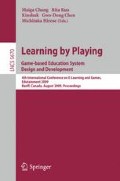Abstract
English listening comprehension is always bewildering for language learners. English language students are generally not taught to recognize English in reduced forms (contractions) in verbal exchanges; they also lack opportunities for practicing listening exercises in reduced forms of English vocabulary. This study developed a film based vocal language learning system working with English reduced forms, thus enabling students to learn English in reduced forms. The film includes an abundance of learning situations, which are easily learned from. Within this system, the learner can import subtitles from English films by themselves. The system also automatically marks reduced English forms in verbal conversations, and offers many example sentences for listening exercises. The system uses subtitles as the source of examinations for students after completing course sections. The system can generate items from movie subtitles automatically, as well as evaluating learner performance. This study probes the effectiveness of the aforementioned learning system as well as the user’s attitude and satisfaction with the system. The results show that the learning system of English reduced forms in verbal conversations had a positive effect on the experimental group’s learning which was significantly better than traditional film systems without English reduced form subtitles used by the control group. Hence this system benefits students learning English contractions. In English listening tests, the results of experimental group were significantly higher than the control group. The results of post-course survey showed positive satisfaction by system users. All students using the system reported a positive attitude after using the system. The system can be improved by enhancing the interfaces which broadcast the films and subtitles as well as increasing the course and experimental time periods.
Access this chapter
Tax calculation will be finalised at checkout
Purchases are for personal use only
Preview
Unable to display preview. Download preview PDF.
References
Chen, Y.: Barriers to Acquiring Listening Strategies for EFL Learners and Their Pedagogical Implications. Teaching English as a Second of Foreign Language 8(4), 38–57 (2005)
Rost, M.: Commentary: I’m only trying to help: a role for interventions in teaching listening. Language Learning & Technology 11(1), 102–108 (2007)
Richards, J.C.: Second thoughts on teaching listening. RELC Journal 36(1), 85–92 (2005)
Chen, H.M., Cheng, S.H.: An investigation on the listening difficulties of technical college students in Taiwan. Journal of China Institute of Technology 36, 335–361 (2007)
Goh, C.C.M.: A cognitive perspective on language learners’ listening comprehension problems. System 28(1), 55–75 (2000)
Brown, G., Yule, G.: Teaching the spoken language. Cambridge University Press, Cambridge (1983)
Field, J.: Promoting perception: lexical segmentation in L2 listening. ELT Journal 57(4), 325–334 (2003)
Ito, Y.: Effect of reduced forms on ESL learners’ input-intake process. Second Language Studies 20(1), 99–124 (2001)
Brown, H.D.: Teaching by principles: An interactive approach to language pedagogy, 2nd edn. Pearson Education, New York (2001)
Richards, J.C.: Listening comprehension: approach, design, procedure. TESOL Quarterly 17(2), 219–240 (1983)
Norris, R.W.: Teaching reduced forms: an aid for improving lower-level students’ listening skills. Fukuoka Women’s Junior College Studies 46, 49–56 (1993)
Pennington, M.C., Richards, J.C.: Pronunciation revisited. TESOL Quarterly 20(2), 207–225 (1986)
Brown, G.: Listening to spoken English. Longman, London (1977)
Weinstein, N.J.: Whaddaya say?: Guided practice in relaxed speech, 2nd edn. Longman, White Plains (2001)
Cook, A.: American accent training: a guide to speaking and pronouncing American English for everyone who speaks English as a second language, 2nd edn. Barron’s Educational Series. The United States of America (2000)
Vogt, L.: Translated by Lo, Helen and Chen, M. Y. (2003). Listening skills for English as It’s really spoken. Cosmos Culture Ltd. (1999)
Fan, Y.: Listening: problems and solutions. English Teaching Forum 31(2), 16–21 (1993)
Norris, R.W.: Teaching reduced forms: putting the horse before the cart. English Teaching Forum 33, 47–50 (1995)
O’Malley, J.M., Chamot, A.U., Kupper, L.: Listening comprehension strategies in second language acquisition. Applied Linguistics 10(4), 418–437 (1989)
Anderson, J.R.: Cognitive psychology and its implications, 4th edn. Freeman, New York (1995)
Clark, H.H., Clark, E.V.: Psychology and language: An introduction to psycholinguistics. Harcourt Brace Jovanovich, New York (1977)
Boyle, J.P.: Factors affecting listening comprehension. ELT Journal 38(1), 34–38 (1984)
Henrichsen, L.E.: Sandhi-variation: A filter of input for learners of ESL. Language Learning 34(3), 103–126 (1984)
Rosa, M.: Don’t cha know? A survey of ESL teachers’ perspectives on reduced forms instruction. Second Language Studies 21(1), 49–78 (2002)
Rost, M.: Listening in action: activities for developing listening in language teaching. Prentice Hall, New York (1991)
Bowen, J.D.: Pattern of English pronunciation. Newbury House, Rowley (1975)
Brown, J.D., Hilferty, A.: The effective of teaching reduced forms of listening comprehension. RELC Journal 17(2), 59–70 (1986)
Lin, L.Y.: Improving listening comprehension using essential characteristics of oral production. Hwa Kang Journal of TEFL 4, 55–71 (1998)
Wu, Y.C., Lee, Y.S., Yang, J.C.: Robust and Efficient Multiclass SVM Models for Phrase Pattern Recognition. Pattern Recognition 41(9), 2874–2889 (2008)
Arbogast, B.: TOEIC official test-preparation guide, 2nd edn. Peterson’s (2001)
Author information
Authors and Affiliations
Editor information
Editors and Affiliations
Rights and permissions
Copyright information
© 2009 Springer-Verlag Berlin Heidelberg
About this paper
Cite this paper
Yang, JC., Lin, YL., Chung, CI. (2009). Developing a Film-Based Learning System with English Verbal Reduced Forms for Supporting English Listening Comprehension. In: Chang, M., Kuo, R., Kinshuk, Chen, GD., Hirose, M. (eds) Learning by Playing. Game-based Education System Design and Development. Edutainment 2009. Lecture Notes in Computer Science, vol 5670. Springer, Berlin, Heidelberg. https://doi.org/10.1007/978-3-642-03364-3_9
Download citation
DOI: https://doi.org/10.1007/978-3-642-03364-3_9
Publisher Name: Springer, Berlin, Heidelberg
Print ISBN: 978-3-642-03363-6
Online ISBN: 978-3-642-03364-3
eBook Packages: Computer ScienceComputer Science (R0)

